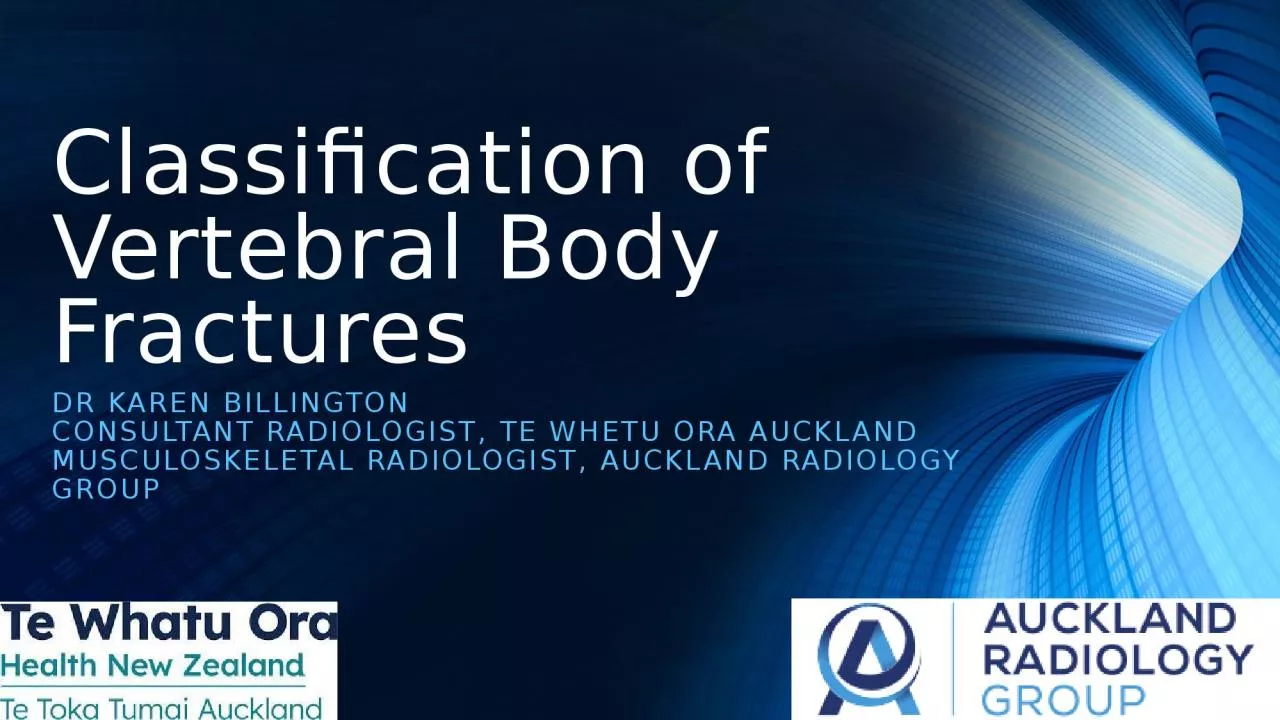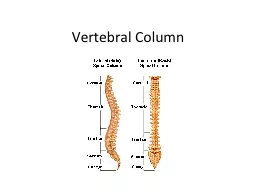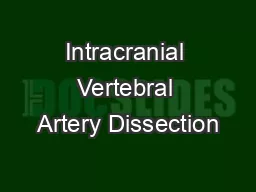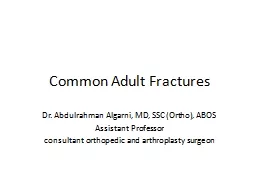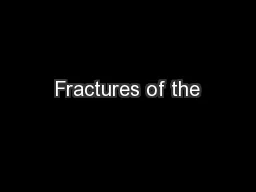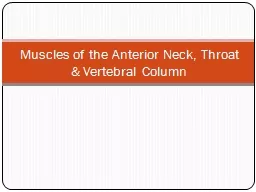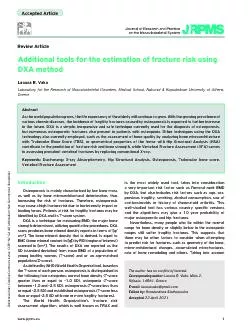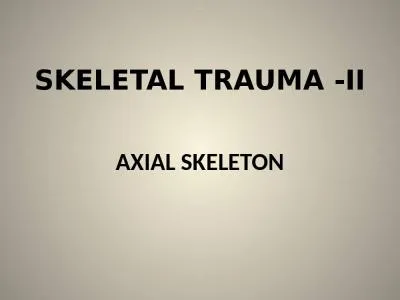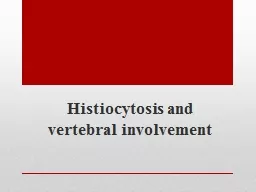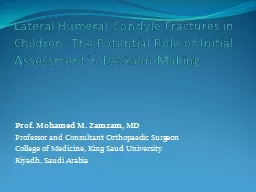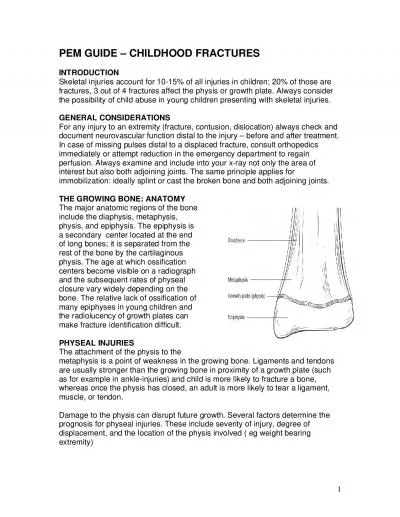PPT-Classification of Vertebral Body Fractures
Author : hailey | Published Date : 2024-02-02
Dr karen billington Consultant Radiologist Te whetu ORA Auckland Musculoskeletal Radiologist Auckland Radiology Group Outline Anatomy Terminology Imaging modalities
Presentation Embed Code
Download Presentation
Download Presentation The PPT/PDF document "Classification of Vertebral Body Fractur..." is the property of its rightful owner. Permission is granted to download and print the materials on this website for personal, non-commercial use only, and to display it on your personal computer provided you do not modify the materials and that you retain all copyright notices contained in the materials. By downloading content from our website, you accept the terms of this agreement.
Classification of Vertebral Body Fractures: Transcript
Download Rules Of Document
"Classification of Vertebral Body Fractures"The content belongs to its owner. You may download and print it for personal use, without modification, and keep all copyright notices. By downloading, you agree to these terms.
Related Documents

